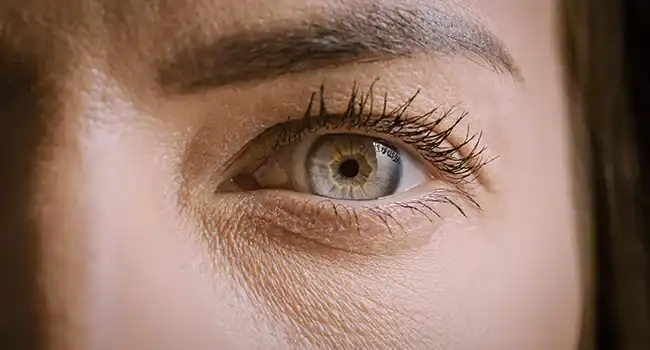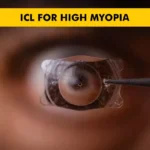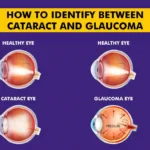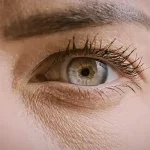Have you ever noticed tiny black dots in the eye that seem to drift across your field of view? While these occurrences are usually harmless, they can sometimes indicate underlying eye conditions that require attention. Understanding the causes, symptoms, and treatment for eye floaters can help you protect your vision.
In this blog, we will explain what black floaters in vision are, why they appear and when to consult a doctor to manage them effectively.
What Are Black Dots in the Eye?
Black dots or floaters in vision refer to small shapes or specks that drift across your field of sight. They often appear as:
- Black dots
- Strings resembling cobwebs or threads
- Shadowy spots that move with your eye movement
These floaters are caused by clumps of gel or tiny particles within the vitreous humour, the clear, gel-like substance that fills the inside of the eye. As light enters the eye, these clumps cast shadows resembling dark spots on the retina.
Floaters are usually a normal part of ageing, but sudden changes or additional symptoms like light flashes or halos may require immediate medical attention.
Common Symptoms to Watch For
Here are the key symptoms associated with eye floaters:
- Tiny black spots in vision that drift across your eye
- Black lines in vision or thread-like shapes resembling cobwebs
- Sudden light flashes and floaters
If you experience any of these symptoms, especially with flashes of light, or a sudden increase in floaters, consult an ophthalmologist immediately.
These symptoms can indicate serious conditions like retinal tears, retinal detachment, or haemorrhage, which require prompt medical intervention to prevent permanent vision loss.
Why Do Black Floaters Appear?
Black floaters, often described as small spots, lines, or cobweb-like shapes drifting across your vision, can be alarming. Understanding the underlying causes can help address concerns and guide you toward appropriate treatment. Here’s a detailed look at why these floaters appear:
1. Age-Related Changes
One of the most common causes of floaters in vision is natural aging. The eye is filled with a gel-like substance called vitreous humour, which helps maintain the eye’s shape. Over time, the vitreous begins to liquefy and shrink. As it does, tiny fibres within the vitreous clump together, casting shadows on the retina. These shadows are perceived as floaters. This process, known as vitreous detachment, is a normal part of aging and typically occurs in individuals over 50.
2. Retinal Tears or Detachment
In some cases, the vitreous pulling away from the retina can lead to a tear or detachment. This is a more serious condition, often accompanied by sudden black spots in vision. Retinal tears or detachments require immediate medical attention, as they can lead to permanent vision loss if untreated.
3. Eye Infections or Inflammation
Inflammatory conditions like uveitis, which affect the middle layer of the eye, can cause floaters. These are often accompanied by redness, pain, and blurred vision. Inflammation causes cells or debris to accumulate in the vitreous, creating shadows that manifest as floaters.
4. Eye Injury or Trauma
Physical trauma to the eye can result in bleeding within the vitreous. Blood cells in the vitreous can appear as black dots in the eye or shadowy floaters in your vision. This condition may resolve on its own or require medical intervention, depending on the severity of the injury.
5. Bleeding in the Eye
Certain medical conditions, such as diabetic retinopathy or hypertension, can weaken blood vessels in the eye, causing them to leak into the vitreous. The leaked blood creates dark floaters, which may vary in size and intensity depending on the extent of bleeding.
6. Foreign Bodies or Debris
Sometimes, black dots in the eye are caused by external factors, such as a foreign object or debris entering the eye. These can create temporary disturbances in vision and may require removal by an eye specialist to prevent further complications.
Treatment for Eye Floaters
Treatment for eye floaters depends on their severity and underlying cause. In most cases, no treatment is necessary, as floaters are harmless and tend to fade over time. However, persistent or severe cases may require medical intervention. The following steps in treatment are recommended.
Observation and Monitoring
- Mild floaters often require no treatment. Your doctor may recommend monitoring your condition through regular eye exams.
Vitrectomy Surgery
- For severe and bothersome floaters, a vitrectomy may be performed. This procedure involves removing the vitreous gel and replacing it with a saline solution.
- While effective, this surgery carries risks such as infection or retinal detachment.
Laser Therapy (Laser Vitreolysis)
- Laser therapy uses focused light to break up large floaters into smaller, less noticeable fragments.
- It is a minimally invasive option but may not be suitable for all patients.
Addressing Underlying Conditions
- If floaters are caused by inflammation, bleeding, or retinal tears, treatment focuses on managing the root cause. For example:
- Anti-inflammatory drops for uveitis
- Laser therapy or surgery for retinal tears
- Medications to control diabetic retinopathy
Lifestyle Management
- Protect your eyes from trauma or injuries.
- Manage conditions like diabetes or hypertension to prevent retinal damage.
- Regular eye checkups help detect and manage floaters early.
Have you been delaying an eye exam for quite some time? Book an Appointment with Centre for Sight in India!
Frequently Asked Questions
Mild floaters are common and harmless. However, sudden black dots, especially with light flashes, may indicate retinal issues that require urgent care.
Treatments like vitrectomy or laser therapy can address floaters. If caused by inflammation, bleeding, or retinal tears, the underlying condition must be treated first.
Floaters in vision often fade over time, but they may not disappear entirely. Persistent floaters that affect vision may require treatment.
Seek immediate medical attention if you experience sudden floaters, light flashes, vision loss, or dark spots. These could indicate a serious underlying condition.





